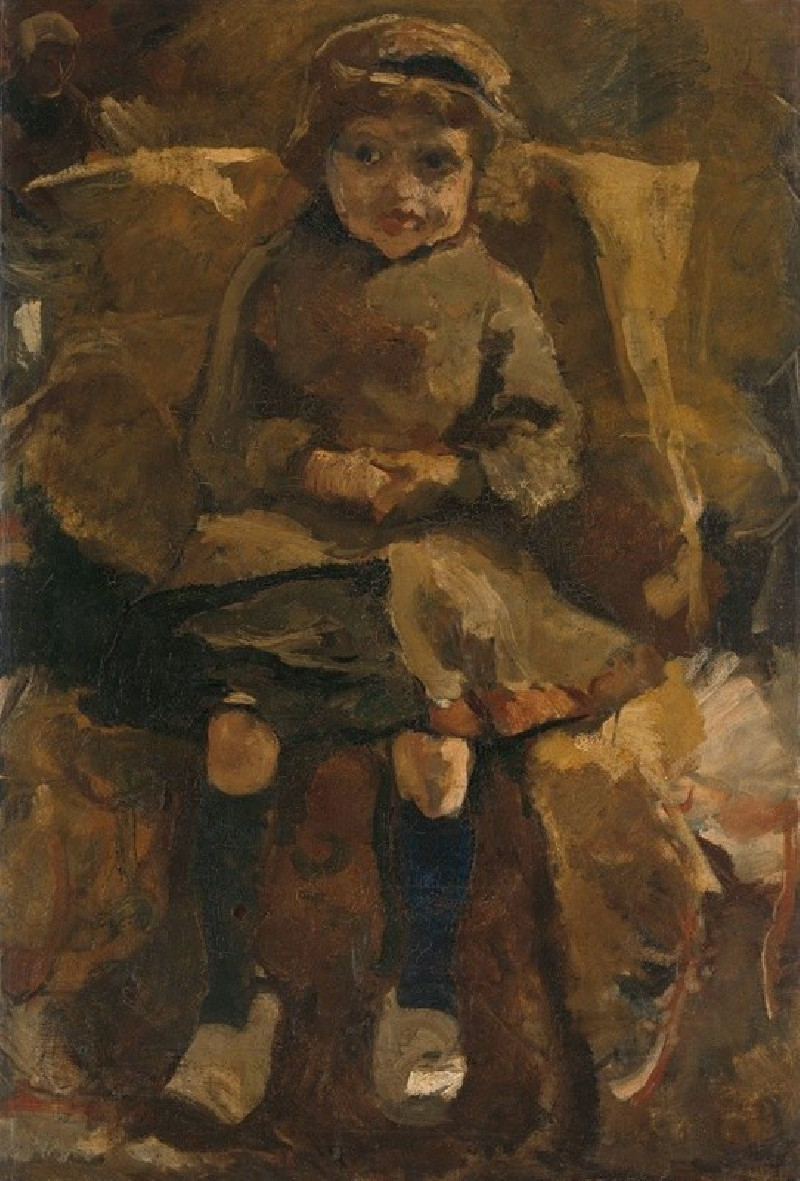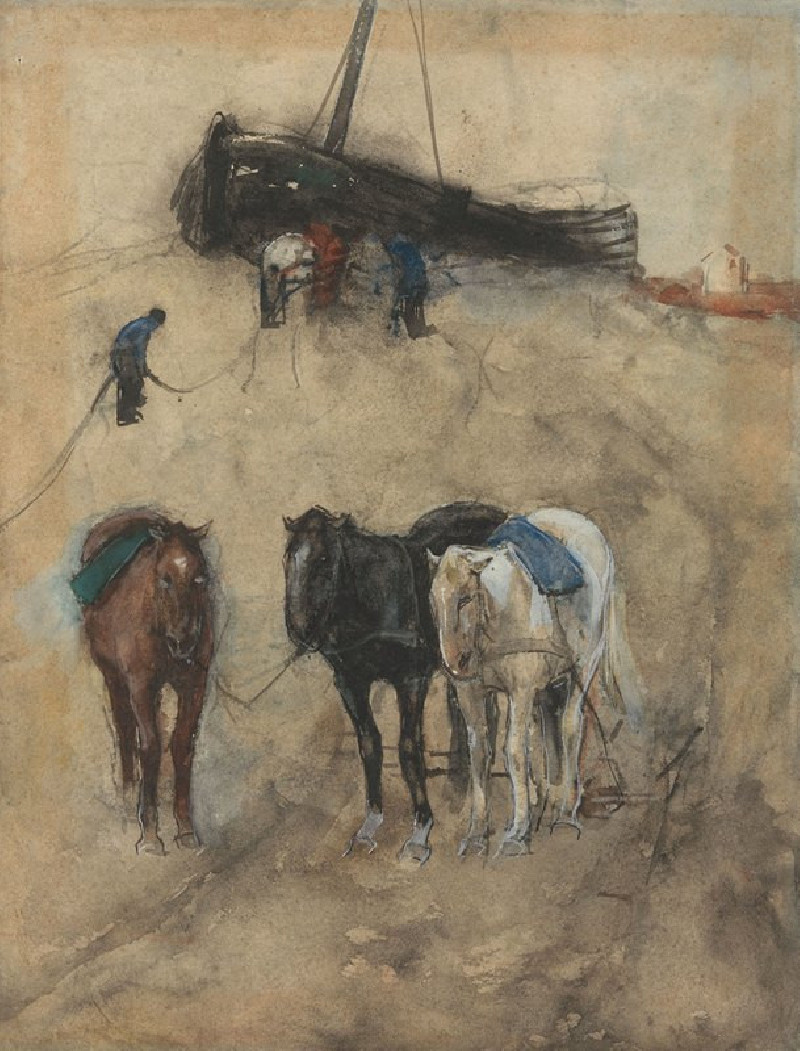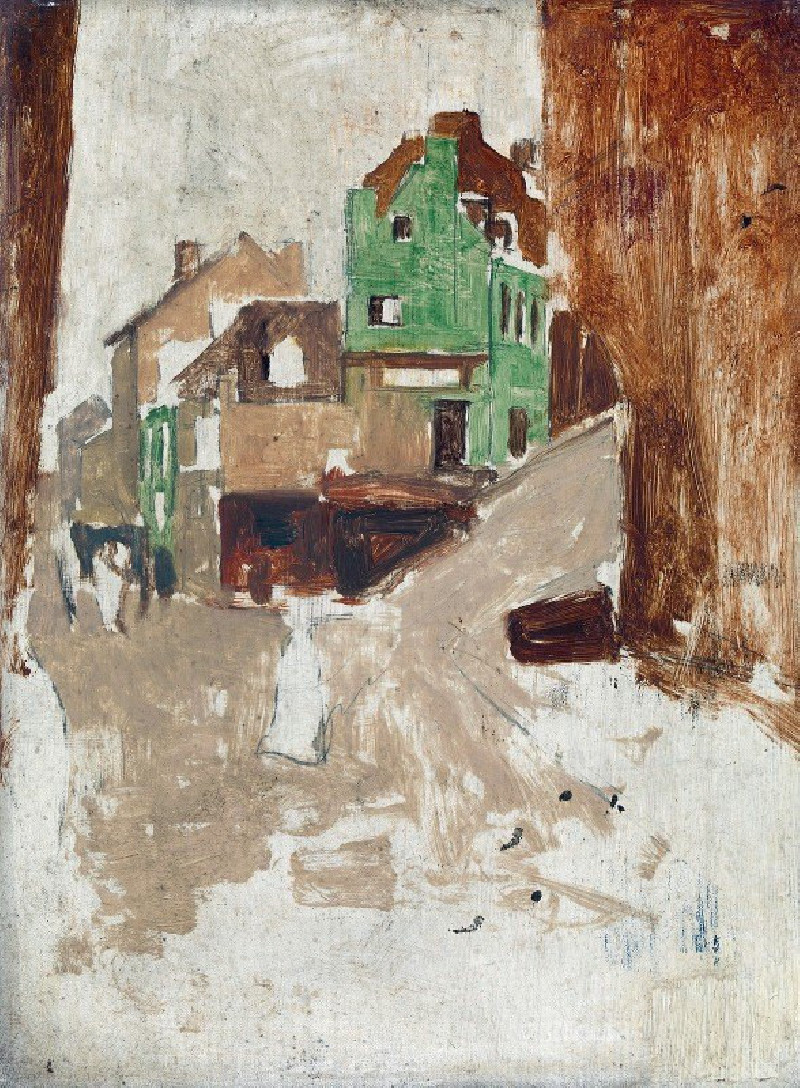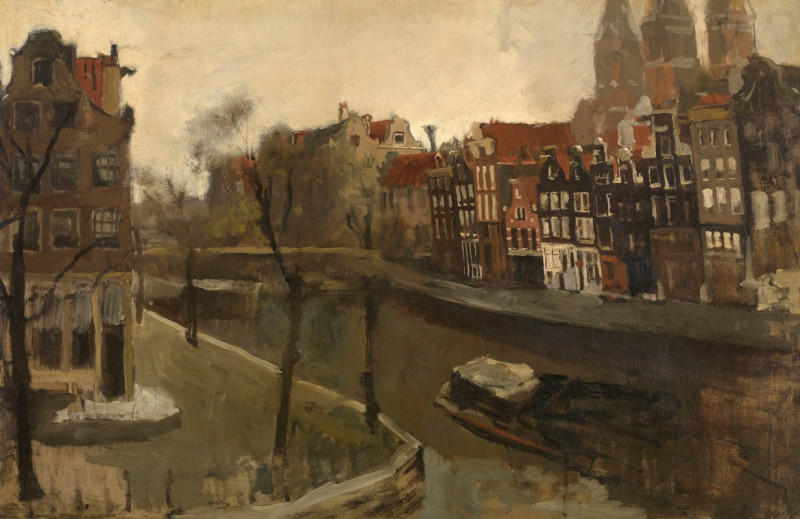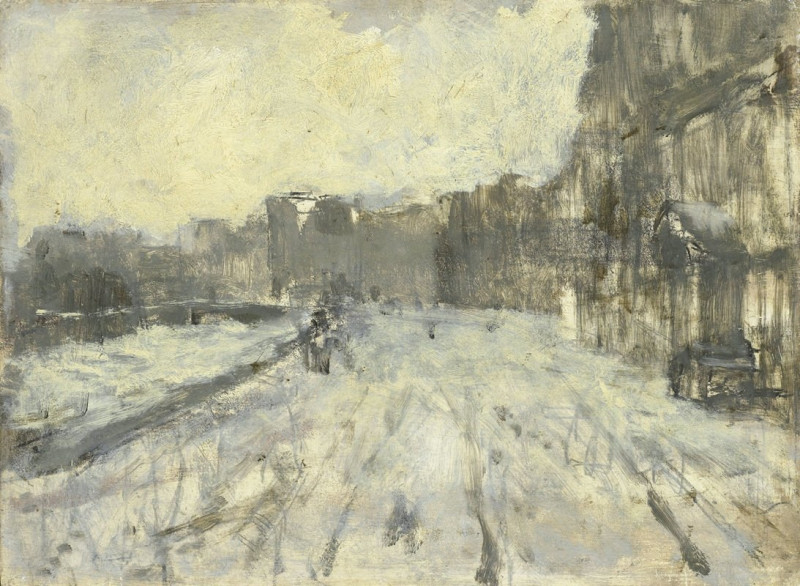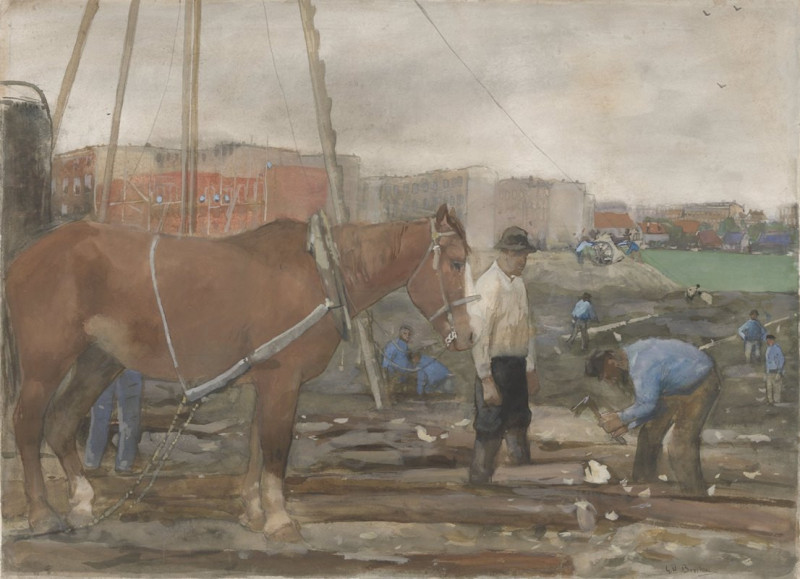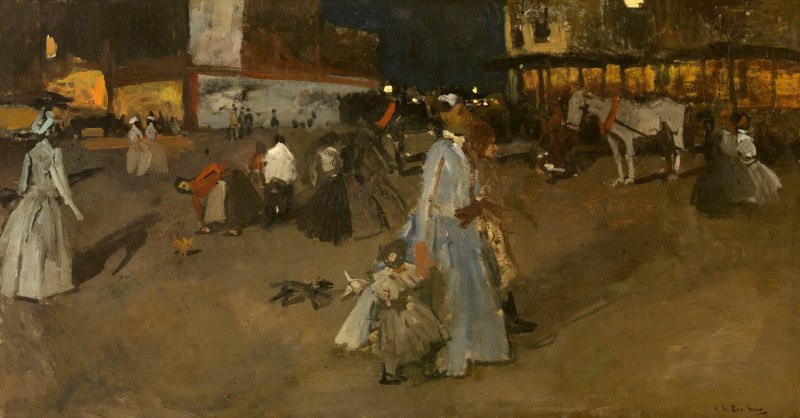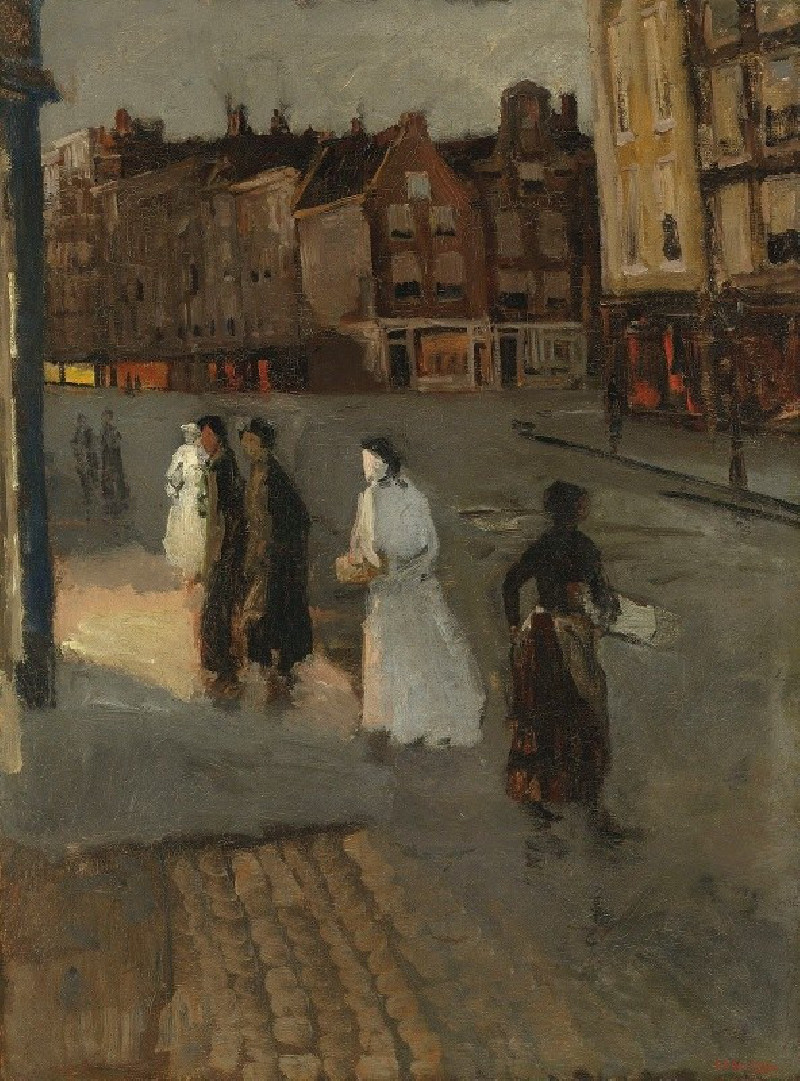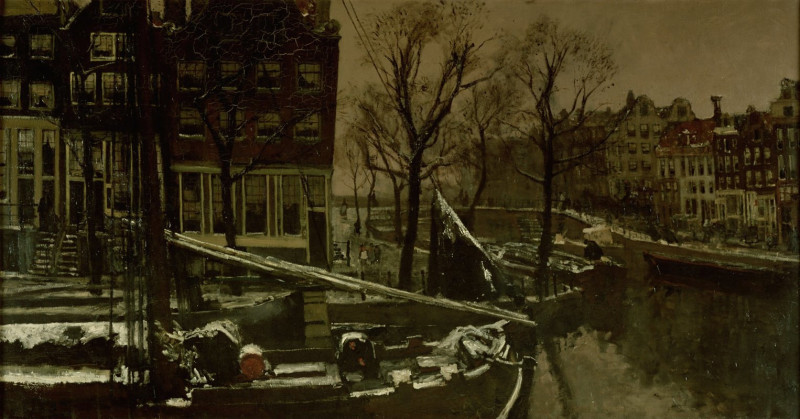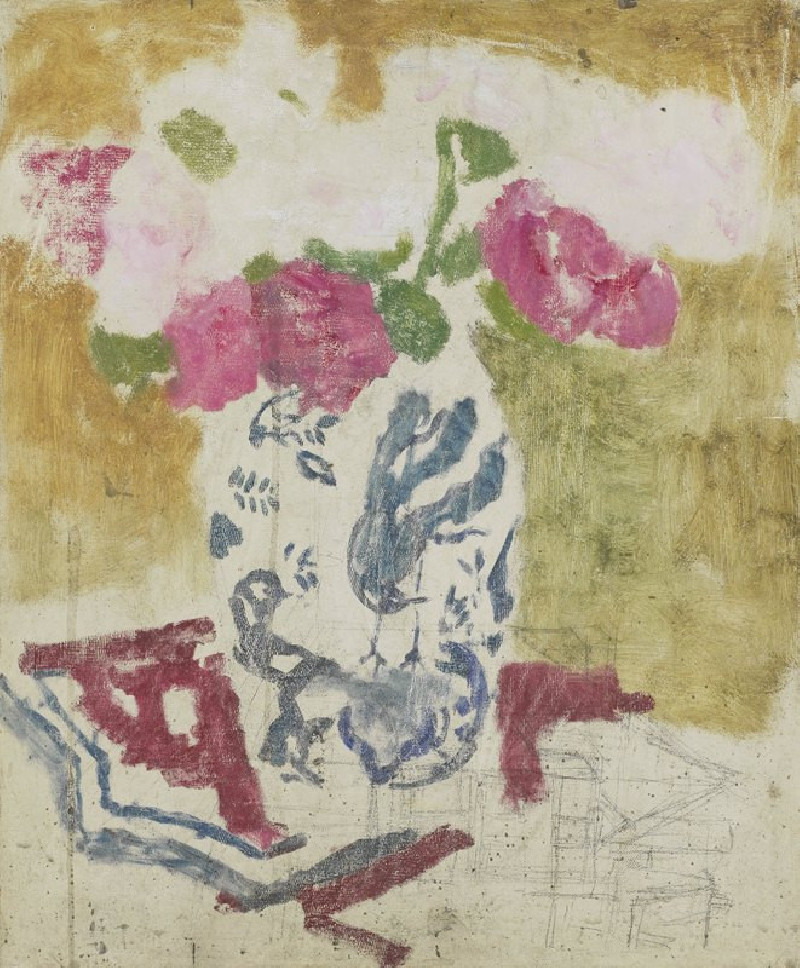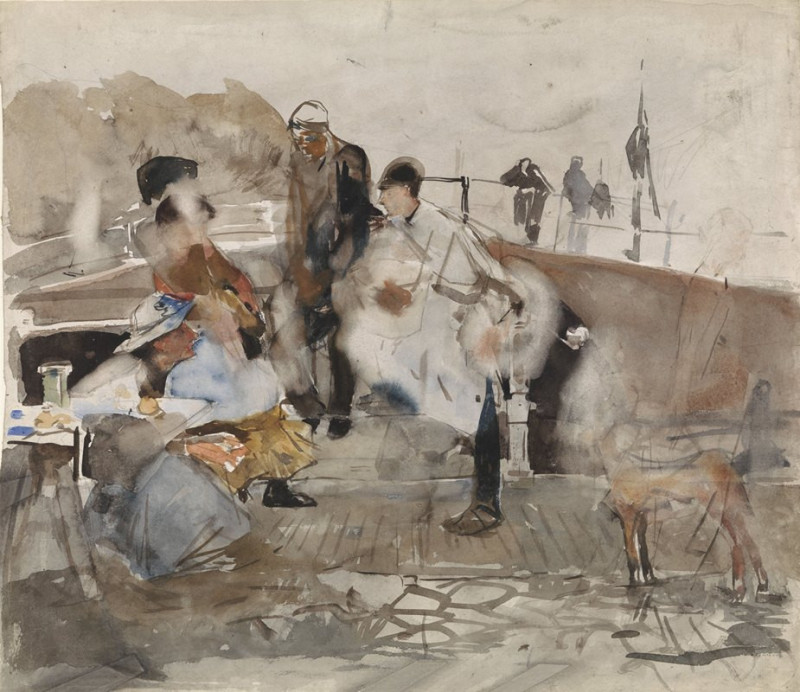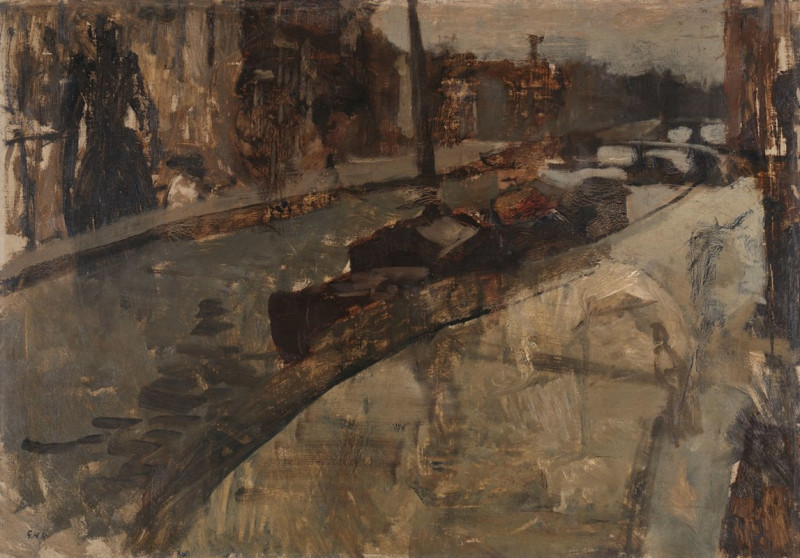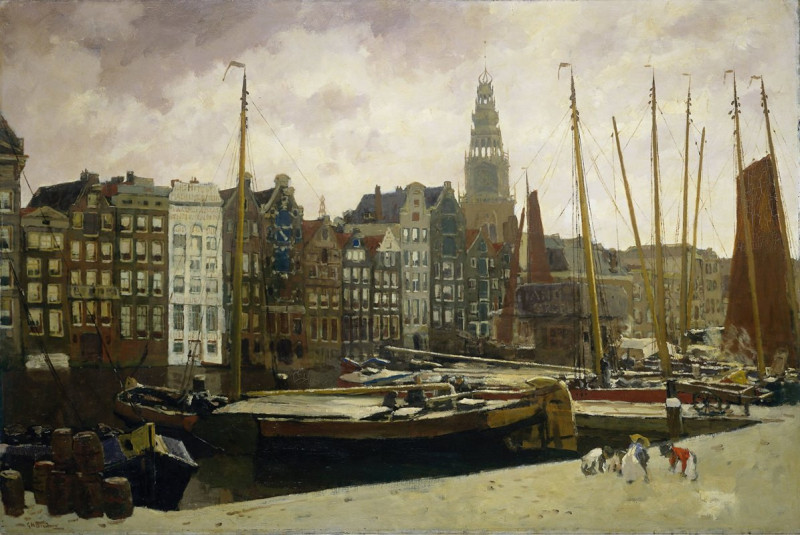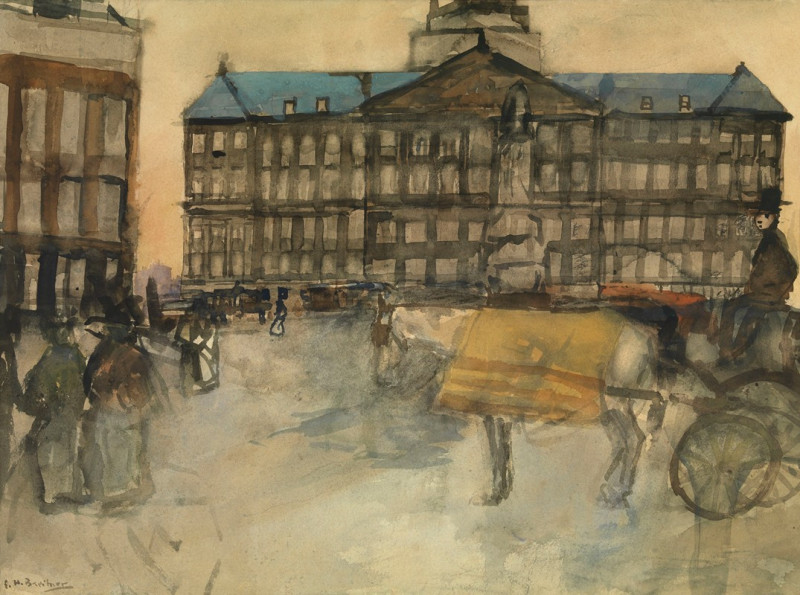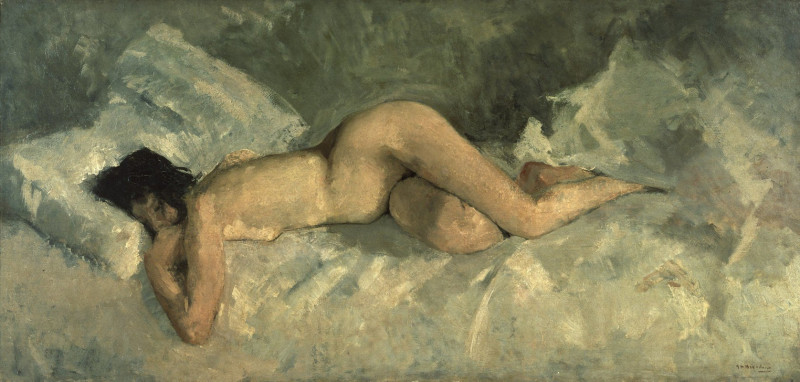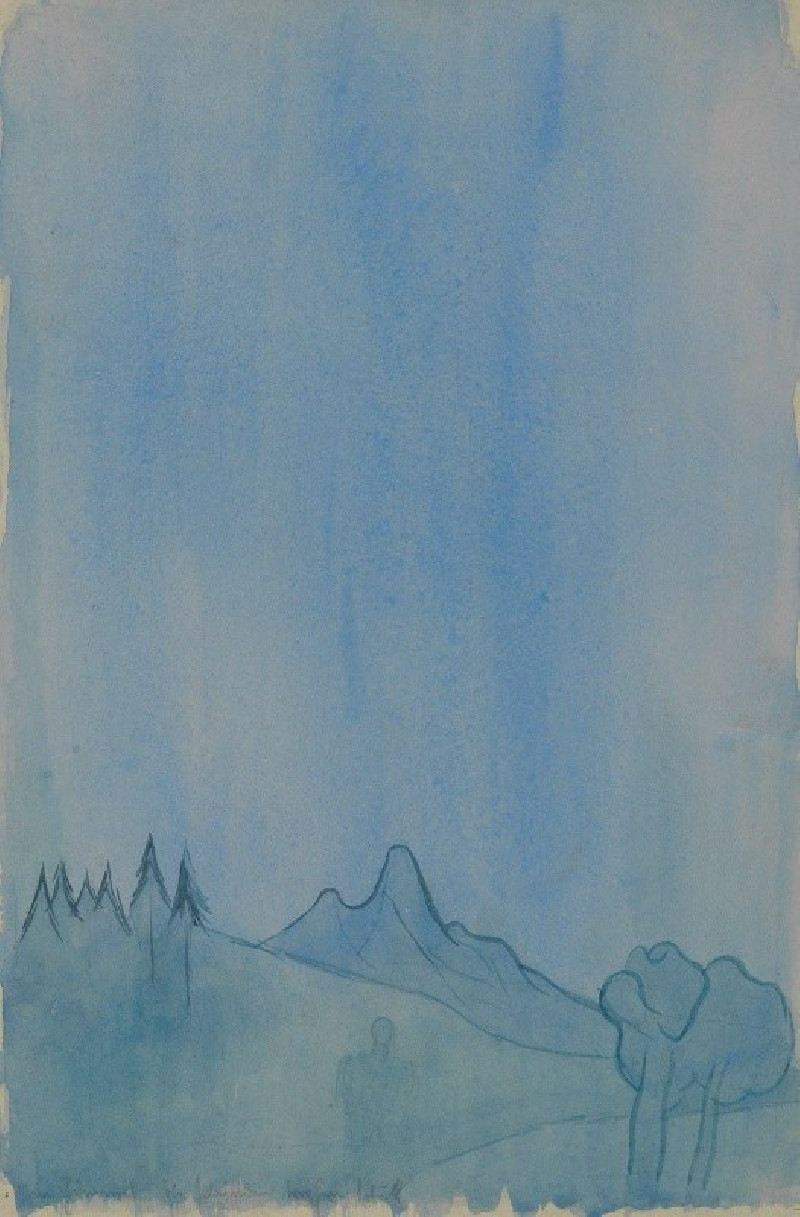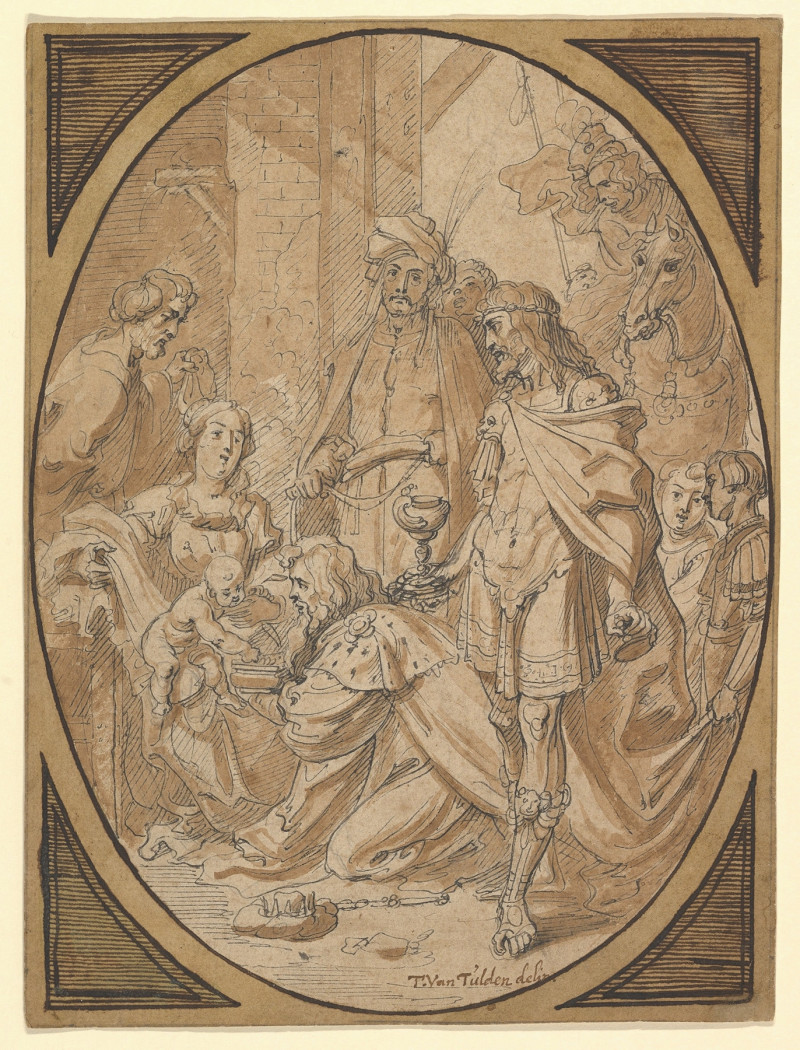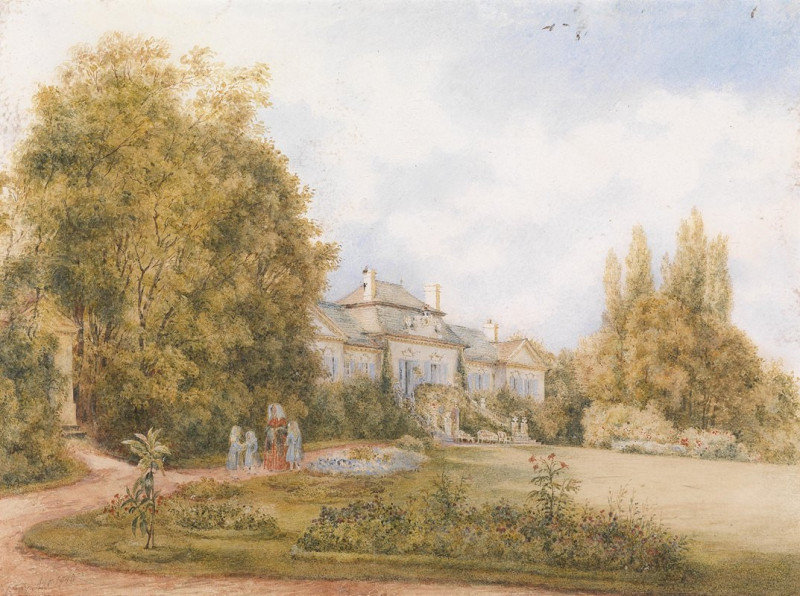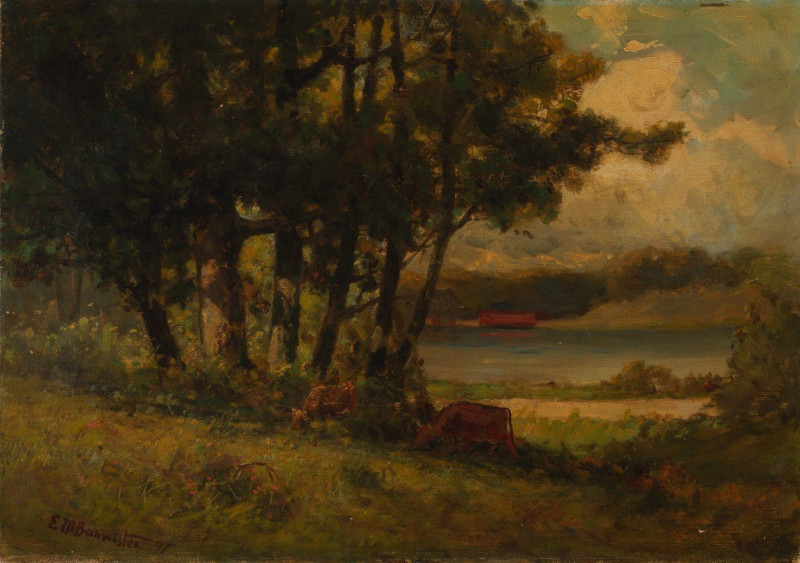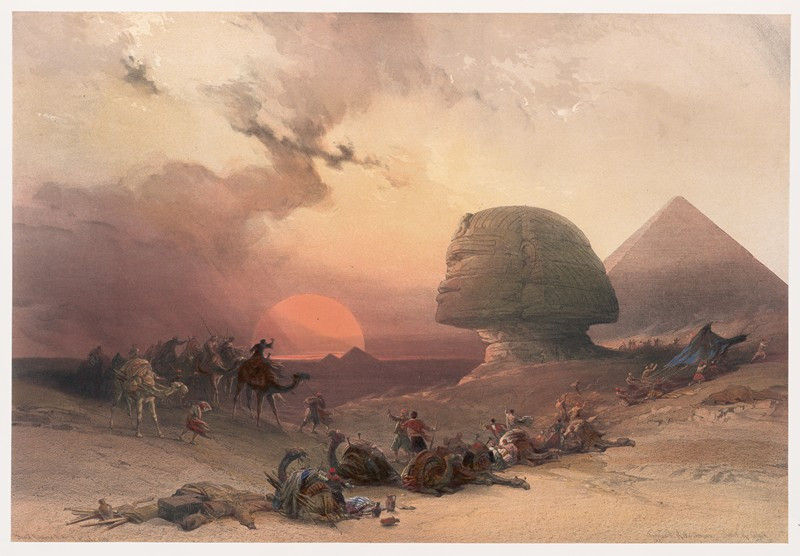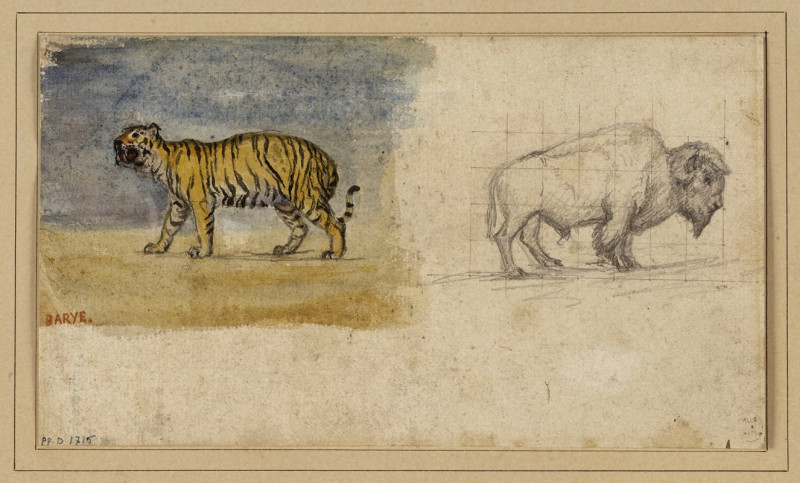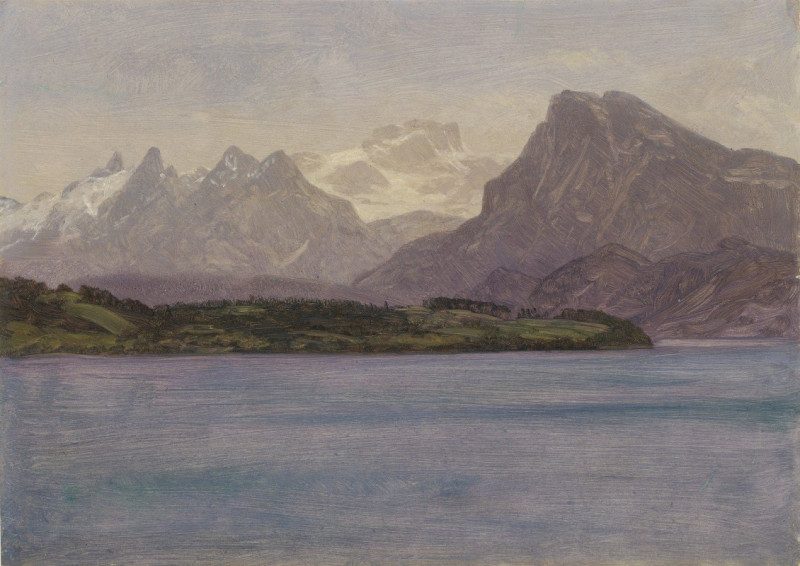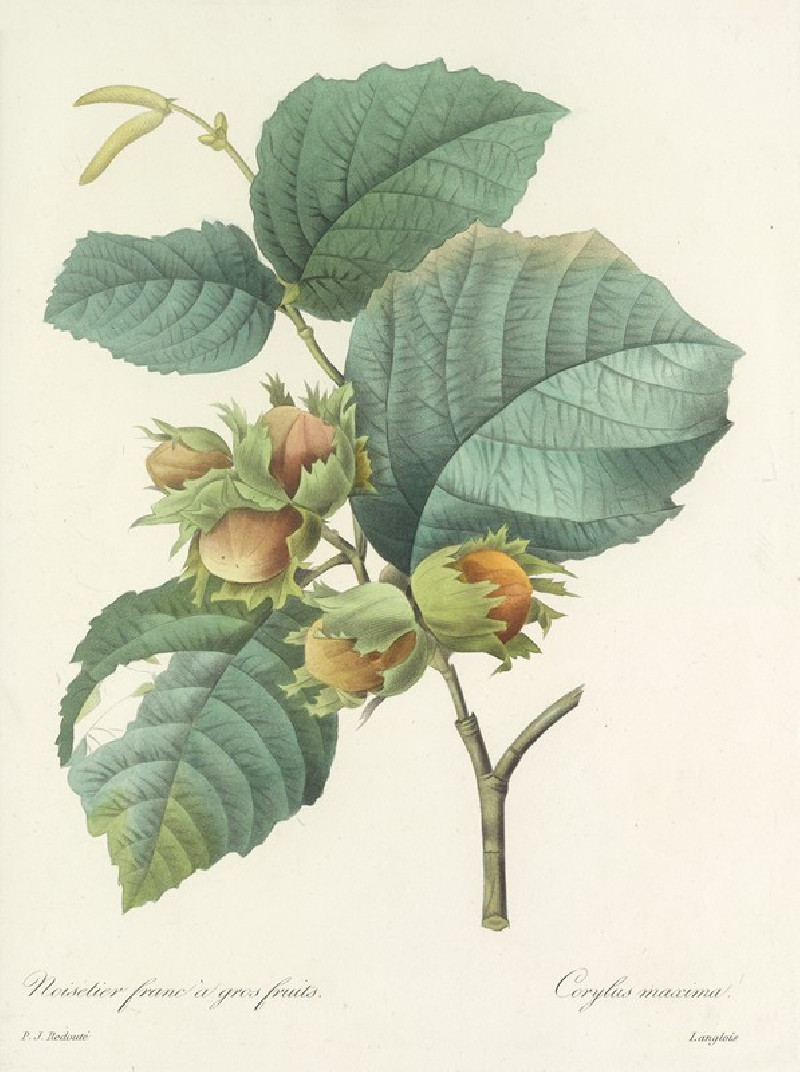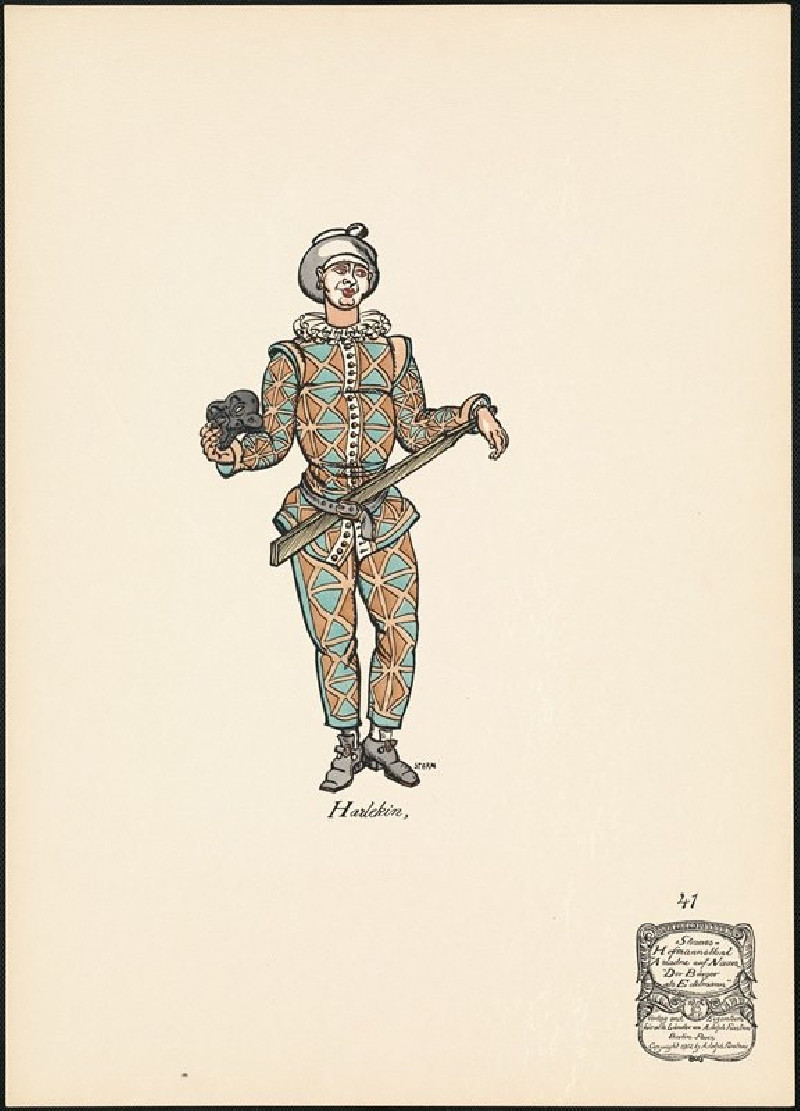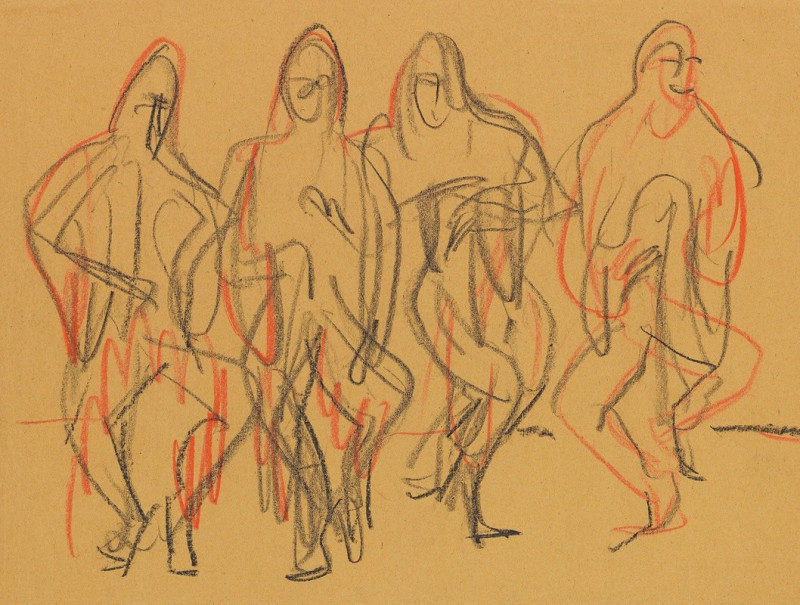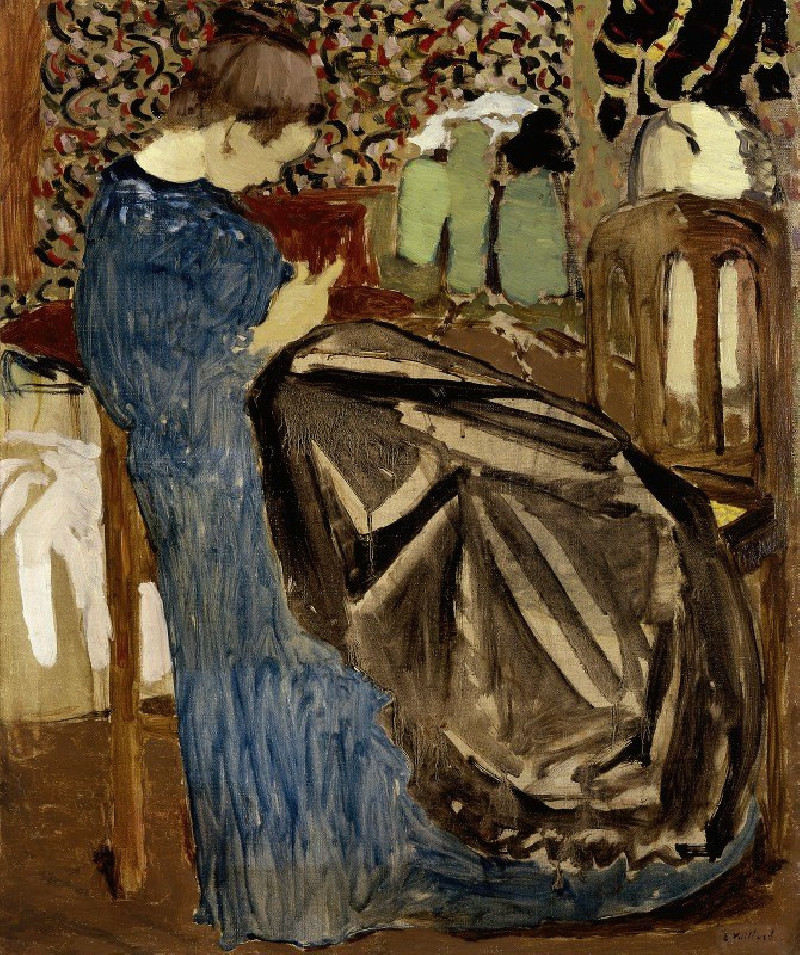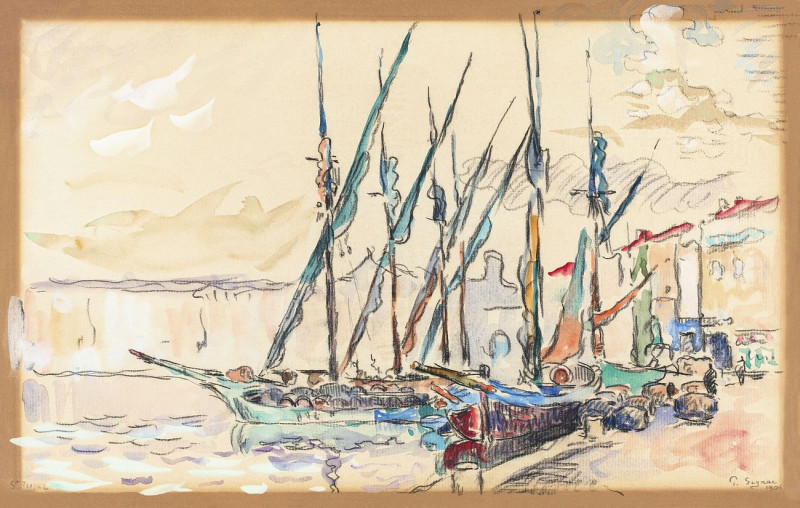Rustende cavalerie op een plein (1880 - 1919)
Technique: Giclée quality print
Recommended by our customers
More about this artwork
Dutch artist George Hendrik Breitner, renowned for his portrayal of urban scenes and candid snapshots of daily life, presents a captivating watercolor painting titled "Rustende cavalerie op een plein." Belonging to the period roughly between 1880 and 1919, this piece beautifully captures a moment of pause in the bustling life of cavalrymen.The artwork depicts a group of cavalry soldiers at rest in a spacious square. The scene is alive with a cluster of horses and riders, some mounted, others standing beside their steeds, illustrating a casual halt in their day. The horses, appearing in various shades of browns and grays, contribute to the naturalistic and somewhat muted color palette Breitner often employed. The soldiers, dressed in traditional military attire, are portrayed engaged in seemingly mundane activities, possibly tending to their horses or conversing with each other, thereby invoking a sense of serene everydayness in military life.Breitner's mastery in watercolor is evident in the fluidity of the medium, creating soft edges and subtle blends that give the painting a dreamy, almost impressionistic quality. The atmospheric perspective highlighted by the darker tones in the background against the lighter, more detailed foreground directs the viewer's attention through different planes of the scene, enhancing its depth and realism.This image not only reflects Breitner's interest in capturing the essence of city life and its characters but also his ability to evoke emotion and narrative through his characteristic loose brushwork and keen observation.
Delivery
Returns
George Hendrik Breitner (12 September 1857 – 5 June 1923) was a Dutch painter and photographer. An important figure in Amsterdam Impressionism, he is noted especially for his paintings of street scenes and harbours in a realistic style. He painted en plein air, and became interested in photography as a means of documenting street life and atmospheric effects – rainy weather in particular – as reference materials for his paintings.


